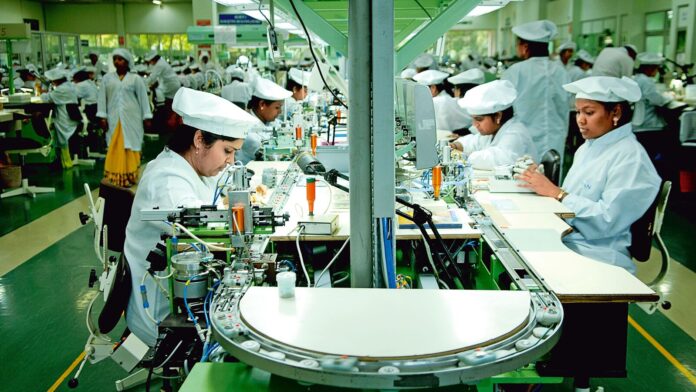In China and the US, industrialization and urbanization took place together. Urbanization and investments in cities promoted the manufacturing sector as well as factories located in or around major cities. They benefited from improved infrastructure, supply chains and agglomeration economies.
This is not happening in India, as the paths of urbanization and industrialization have diverged. They did move together in the 1990s, but then diverged later. The manufacturing sector is de-urbanizing and relocating to small towns and rural areas to stay cost competitive.
The sector’s share in employment, output and the number of enterprises in mega cities and urban areas has been declining, while it is growing in small towns and rural areas.
Inadequate physical and human infrastructure in these geographies, however, has prevented the sector from growing rapidly. So, has the de-urbanization of manufacturing become a binding constraint on the country’s industrialization? No, it hasn’t.
An empirical analysis of the spatial location of manufacturing enterprises in 600 districts shows that the dispersion of the sector away from urban to rural areas has been associated with more efficient allocation of enterprises by geography, and this is good for economic growth and job creation. The future of industrialization is not in crowded megacities, but in small towns in rural areas.
Scaling up physical and human infrastructure there will accelerate the pace of industrialization and enable these regions to become growth engines.
This will also reduce the huge spatial and sub-national disparities in the economic geography of industrialization. It will further encourage non-farming activities and support rural development and job creation.
Unfortunately, small towns have been overlooked in the political discourse. India needs to change its investment strategy to focus on small towns and rural areas that have more land and much more to gain from a youth demographic dividend.
If India’s financing needs for a rural structural transformation are huge, so is the potential for attracting private investment to rural zones. The basic characteristics of rural infrastructure projects, which promise a steady revenue stream and returns on investment that exceed inflation, make them attractive for most institutional investors.
While private institutional investors have over $100 trillion under their management, globally, their allocation for rural infrastructure remains tiny.
Rural distress will not be resolved just through agricultural pricing reforms. We need a structural transformation that expands manufacturing, leverages India’s demographic dividend, enlarges the middle class, promotes gender equality, speeds up the country’s march towards net-zero emissions and creates more jobs.
India’s rural areas are home to the largest concentration of poor people in the world. Most of them live with poor or no access to education, healthcare, roads, electricity and internet services.
The stand-off between farmers and the government and rising rural protests are not just an expression of discontent, but a reflection of rural distress. People in rural areas have higher aspirations today and are demanding more jobs and a better quality of life.
Addressing rural distress could unleash the next stage of a larger structural transformation and help the country achieve its long-term growth goals.
So far, the long-awaited transformation of India from a rural-agrarian to an urban-industrial economy (and society) has not materialized. The Indian economy is missing the broad changes that were experienced by successful East Asian economies after they embarked on the process of industrialization.
These countries saw much of their agrarian workforce leave the countryside and settle with their families in urban spaces to work in fast-expanding industrial units and participate in a rapidly growing urban-centric economy. India, clearly, has not followed that path.
More than 40% of India’s total employment is still in the agricultural sector, compared to less than 20% in China and less than 2% in the US. Indians depend on farming not because it is remunerative, but because there are few non-farm job opportunities.
All this strengthens the argument in favour of a major rural development thrust. Improving rural infrastructure could potentially lead to a four-fold increase in job growth.
If job creation is a policy priority, policymakers should focus on scaling up investments in human and physical infrastructure in rural areas, where the biggest potential lies for the manufacturing sector to expand and create more jobs.
To be clear, India has not yet lost the global manufacturing race. Unlike China, Europe and the US, which have ageing populations, we have the advantage of a demographic dividend.
We have the largest youth bulge in the world, with our working-age population increasing in comparison with the dependent population, a situation expected to last until 2040.
As a latecomer to industrialization, India also has other advantages, such as access to technology and processes that can support green growth. Global diversification of supply chains away from China will also help. But we need the government to act.
#Pour #resources #rural #India #manufacturing #boom
